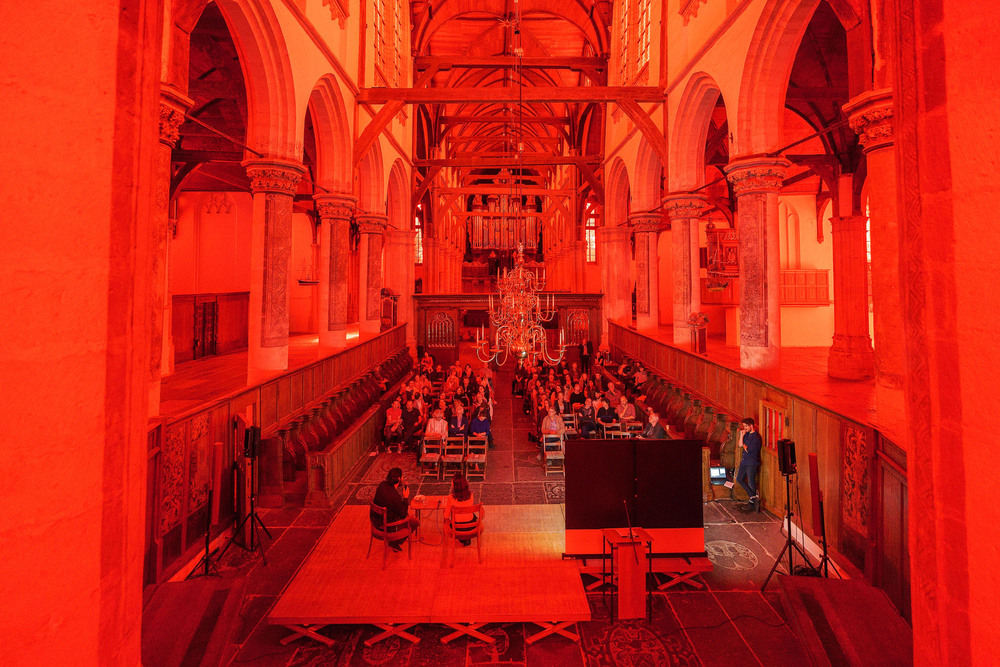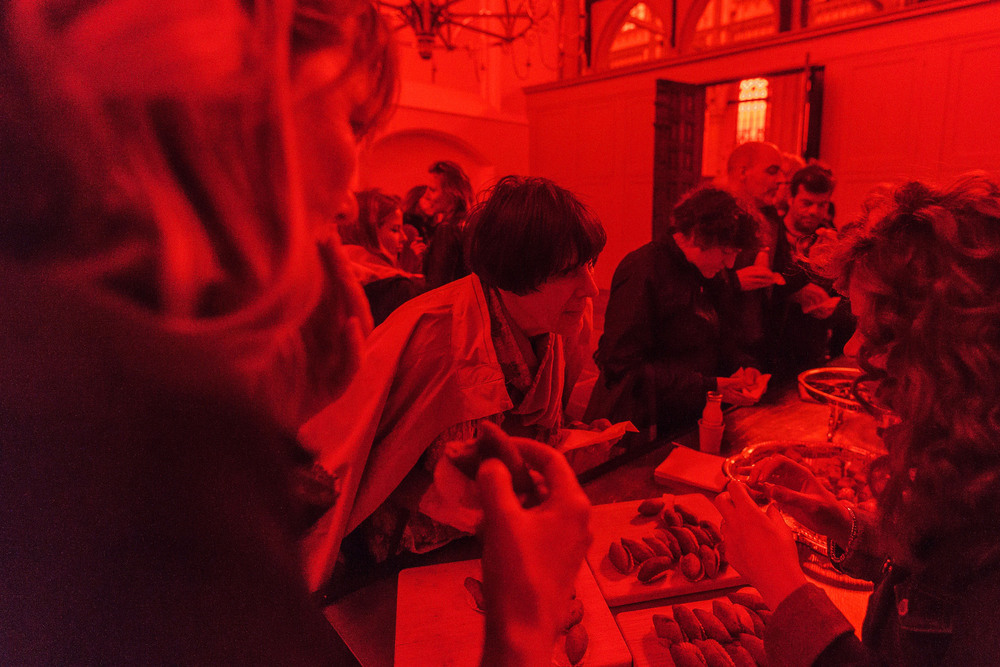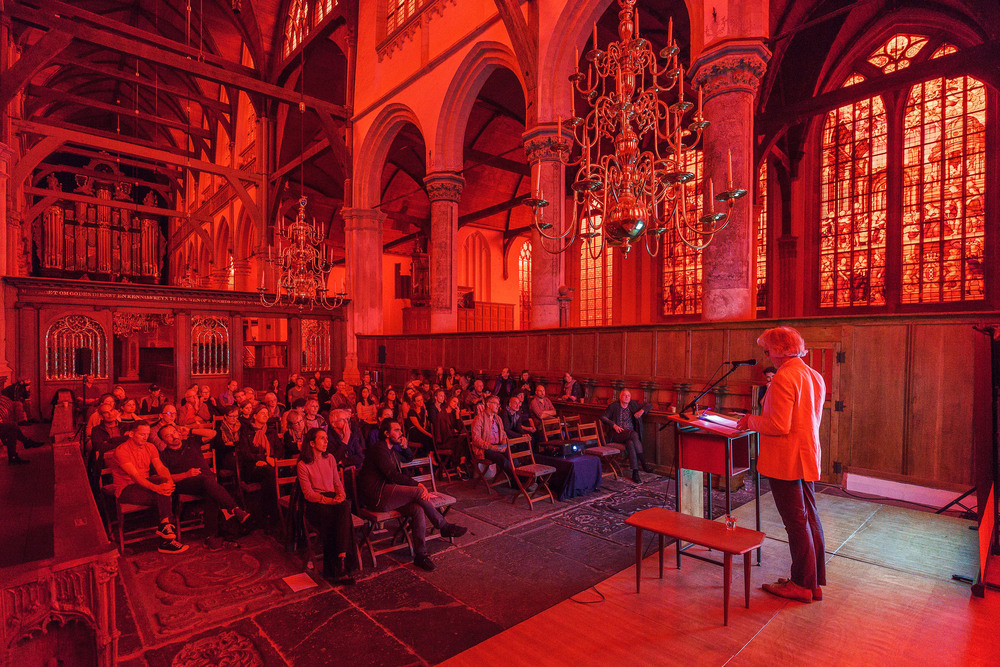The Resurrection of the Lost Image
Giorgio Andreotta Calò created a monumental, immersive intervention in the Oude Kerk by filtering the natural light passing through the windows by a red film. Only one window was executed in red glass and remains, even after this procedure. With this he brought the church a new temporary Alteration which refers to Roman Catholic visual language and reflects on the Iconofury of 1566 as a turning point in religious thinking. Destructions of the Buddhas of Bamiyan and the ancient city of Palmyra prove iconofury has a lingering significance.
The only remaining Catholic stained-glass window (Maria-glass), was used as a sort of diapositive film producing photographic contactprints during the exhibition. The artist used the church as a darkroom, a place to generate – and simultaneously preserve – images. The red light protected the photosensitive materials by the oxidatin. In order to re-create the lost image, Calò collaborated with the Rijksakademie voor Beeldende Kunst in the photographic process.
The Holy Sepulcher, located on the North side, is separated from the rest of the church with a door and houses a Byzantine carved canopy. The space is illuminated by a single window. Once there was a group of statues with the grave-laying and wining of Christ. This space marks the transition from Gothic to Renaissance. By placing a mirror on the other side of the alley, Calò aimed to capture sunlight and direct it through the red inactinic glass into the space. It altered the light in the chapel and activated the spot underneath the canopy. During the 40 days around Easter, the light shines exactly on the spot where the image group stood before iconofury, activiating its absence.
Iconofury came to the Oude Kerk in 1566. The absence of images is still visable today; empty spots on the pilars in the choir remind us of the years of the Reformation – a schism in Western Christianity initiated by Martin Luther and continued by John Calvin and other Protestant Reformers in 16th-century Europe. The Reformation was not the result of some 'pure' theological debate about images, but of the rejection of the ecclesiastical hierarchy and its use of rituals, objects and visual propaganda.
In this symposium the aim was to reconnect iconoclasm to our times. What impact does iconoclasm have on current thoughts on the image? Can the image re-appear inside the church? And if so, will its meaning change within the context of a museum?
During the symposium, experts on contemporary art, iconoclasm, occidentality and lithurgy spoke on iconoclasm in relation to the work of Giorgio Andreotta Calò. Together with the audience they drew conclusions and created new perspectives on the impact of the image in artistic and religious contexts.
| Materials | Microphone, screen, projector, laptop, speakers |
Fragments of a process
Related
Read more
Read more
Read more
Read more
Identifiers for references
| Oude kerk Adlib Collect priref | 2316 |





